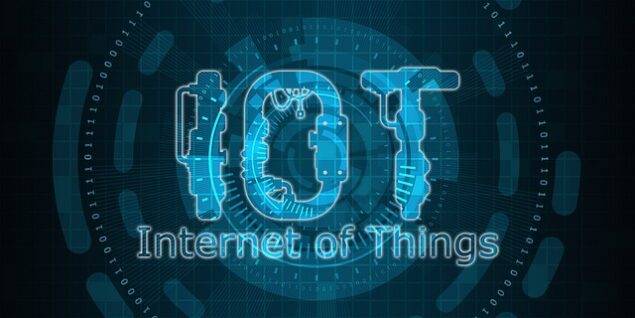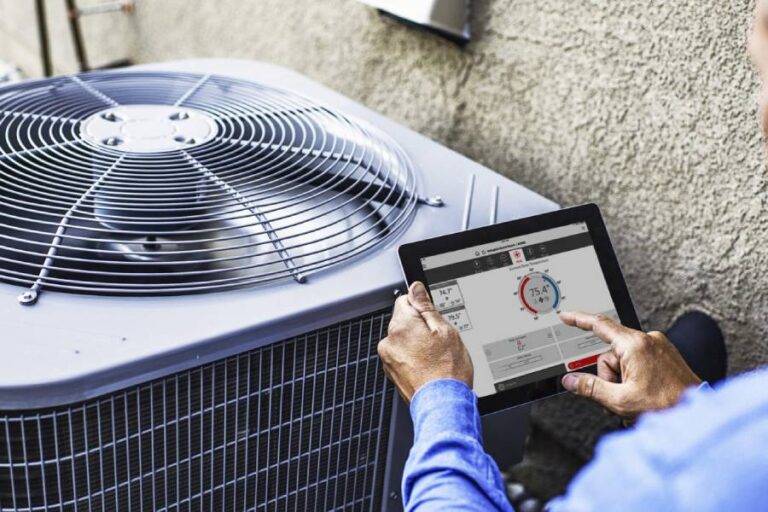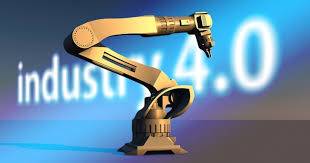Now that we have presented the key capabilities of IoT, it is time to look at the most effective and popular examples of IoT in retail. Here are some of them:
Location tracking
The Internet of Things solves one of the biggest problems in retail – the lack of delivery reliability. The technology is able to increase operational efficiency and improve logistics transparency.
The German supermarket chain Feneberg Lebensmittel uses IoT technology to visualize the movement of goods and employees both in the warehouse and during transport.
Predictive device maintenance
Malfunctions in electrical appliances (eg refrigerators) can lead to huge damage to reputation and money and throw dozens of units of products in the trash. To stay up-to-date with store maintenance and to take a proactive approach with equipment managers, store managers often use IoT in retail. The technology is able to monitor the devices in real time and notify the user about probable malfunctions.
In addition to the Internet of Things used in retail, predictive device maintenance has already been implemented in transportation (Volvo and IBM), manufacturing (Chevron and Microsoft) and utilities (Florida Power Light).
Inventory management
With IoT, store managers can automate product orders, notify when a particular product needs to be reordered, collect data about the popularity of a particular item, and prevent employee theft.
There is no shortage of inventory-centric IoT solutions, including:
MIT Drone Inventory System – an IoT-based drone that monitors inventory in real time and sends alerts if units are no longer available.
Intel Retail Sensor Platform – RFID Antenna scans the number of units on the sales floor and notifies the store manager if it is low. The platform looks like a plug and play device.
Lululemon – a technology for customer-centric inventory managers. A buyer can perform a real-time check to ensure that the desired product is available at the nearest store.
Customer mapping and traffic analysis in the mall
By placing IoT sensors in the store, managers can better understand the most popular areas and products. Using user activity heat maps can help you better understand where it’s best to put items up for sale, how to optimize your store space to use low-activity spaces more efficiently, and track and track shopping trends. over time.

A technology developed by Prism Skylabs uses the store’s camera and IoT to create heat maps of a store’s appearance and transfer data to a dashboard in the form of easy-to-read information.
Also read about: Ways to Control Your PC from any Remote Location
Smart shelves
Smart Shelf technology was widely adopted in retail when Kroger, the best-selling supermarket chain in the US, tested over 2,000 smart shelves in 2016.
When a retailer walks through the store with a digital shopping list on his smartphone, the cell phone vibrates if a necessary product is nearby on the shelf. For better visibility, even a shelf that needs more goods lights up.
Smart shelves share three common elements: an RFID tag, an RFID reader, and an antenna. A microchip on a tag is transmitted to an IoT platform using the antenna, where it is processed by a reader. All data collected by Smart Shelfs during the day is then transmitted to a store manager to obtain customer information.
Custom notifications
IoT-based hyperpersonalization is widespread in retail. Geofencing and IoT beacons are proven ways to get a customer’s attention. Here are some examples of retail IoT related to these technologies:
Starbucks IoT beacon. After a Starbucks, people received notifications about new dishes or promotions and were invited to visit. According to RT Insights, the campaign proved to be extremely effective.
Avery Dennison has managed to create personalized shopping experiences by turning clothing labels into RFID tags. These tags were VIP subscriptions that shoppers could use to access bonuses in stores in the city. As soon as an Avery Dennison customer was near the store offering promotions, he was immediately informed.




